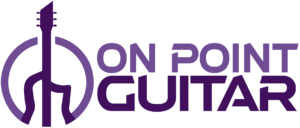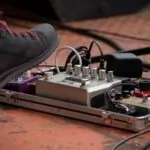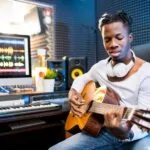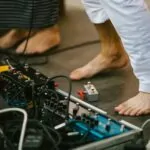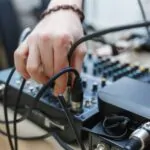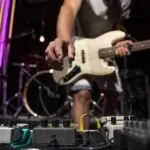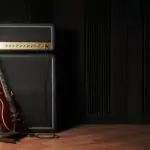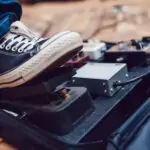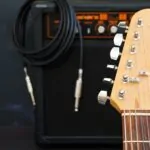As a guitar player, you know that the right combination of pedals can make all the difference in your sound. One pedal that often gets overlooked is the EQ pedal. While it may not be as flashy as a distortion or delay pedal, the EQ pedal can be a powerful tool for shaping your tone.
In this article, I will explore the best placement for an EQ pedal in your signal chain and how to use it effectively.
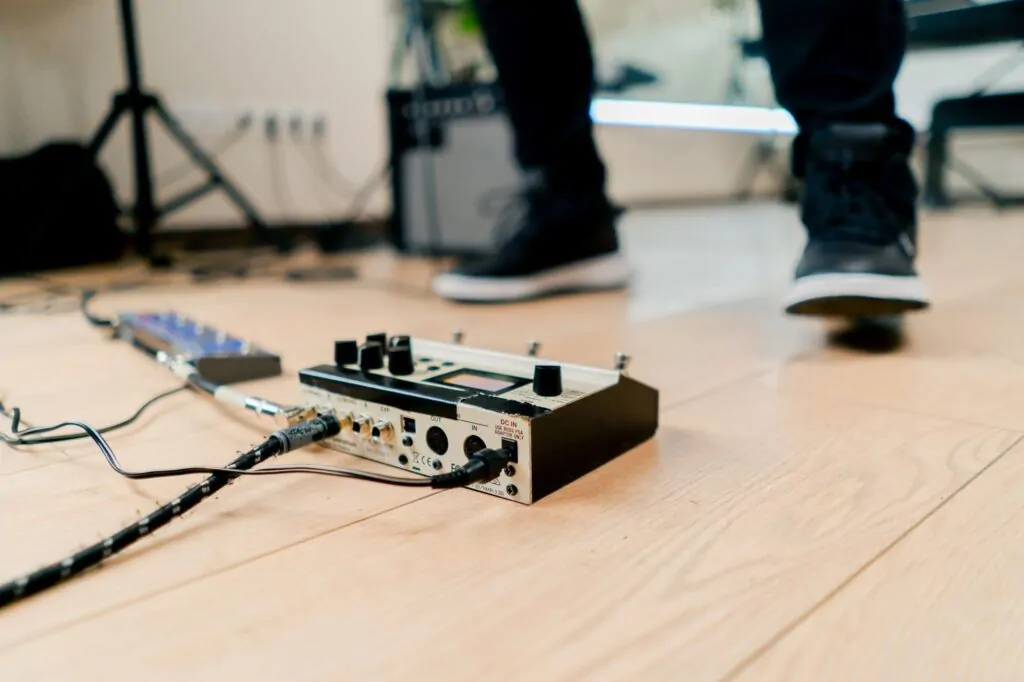
Before we dive into placement, it’s important to understand what an EQ pedal does. EQ stands for equalization, which means adjusting the balance of frequencies in your guitar’s sound. An EQ pedal allows you to boost or cut certain frequencies to shape your tone.
For example, you can use an EQ pedal to boost the midrange frequencies for a more cutting tone, or cut the high frequencies for a warmer sound.
The most common placement for an EQ pedal is after your distortion or overdrive pedals. This allows you to shape the tone of your distorted sound. However, some players prefer to place the EQ pedal before their distortion pedals, which can give you more control over the distortion sound.
Ultimately, the best placement for your EQ pedal will depend on your personal preference and the sound you’re trying to achieve.
Check out these other posts:
Key Takeaways on EQ Pedal Placement
- EQ pedals allow you to adjust the balance of frequencies in your guitar’s sound.
- The most common placement for an EQ pedal is after your distortion or overdrive pedals.
- The optimal placement for an EQ pedal will depend on your personal preference and the sound you’re trying to achieve.
Also don’t miss:
- MXR 10 Band EQ Settings Guide
- Noisy Guitar Pedals: Causes, Solutions & Best Tips For Optimal Sound
- Parametric EQ vs Graphic EQ
Understanding EQ Pedals
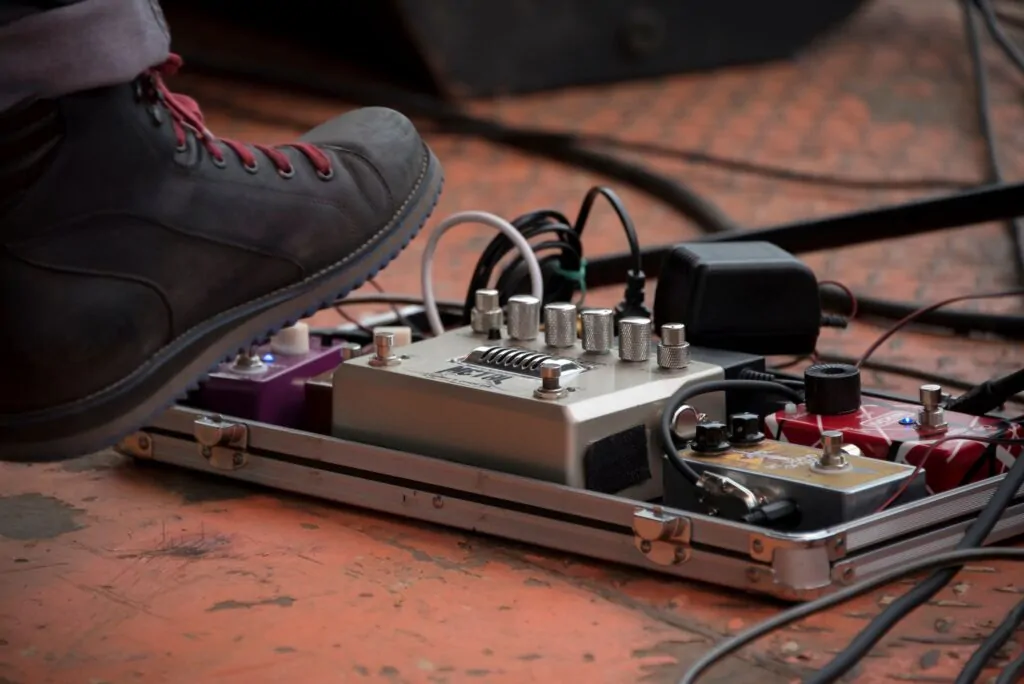
As a guitarist, I understand the importance of tone shaping. One of the most useful tools in achieving the desired tone is an EQ pedal. EQ stands for equalizer, and it is a device that enables precise control over the frequencies in your guitar’s signal.
The Role of EQ in Sound Shaping
EQ pedals allow you to boost or cut specific frequency bands, which can significantly impact the overall sound of your guitar. For example, boosting the midrange frequencies can make your guitar sound more present and punchy, while cutting the high frequencies can make it sound warmer and smoother.
EQ pedals are often used to compensate for the shortcomings of your guitar or amplifier. For instance, if you have a bright-sounding guitar, you can use an EQ pedal to cut the high frequencies to achieve a more balanced sound. Similarly, if your amplifier lacks bass response, you can use an EQ pedal to boost the low frequencies.
Types of EQ Pedals: Graphic vs Parametric
There are two main types of EQ pedals: graphic and parametric. Graphic EQ pedals have a set number of frequency bands that you can adjust using sliders. The number of frequency bands varies depending on the pedal, but most graphic EQ pedals have between five and ten bands.
Parametric EQ pedals, on the other hand, allow you to adjust the center frequency, Q curve, and gain of each frequency band. This gives you much more control over the sound shaping process, but it also requires a bit more knowledge and experience to use effectively.
Optimal EQ Pedal Placement
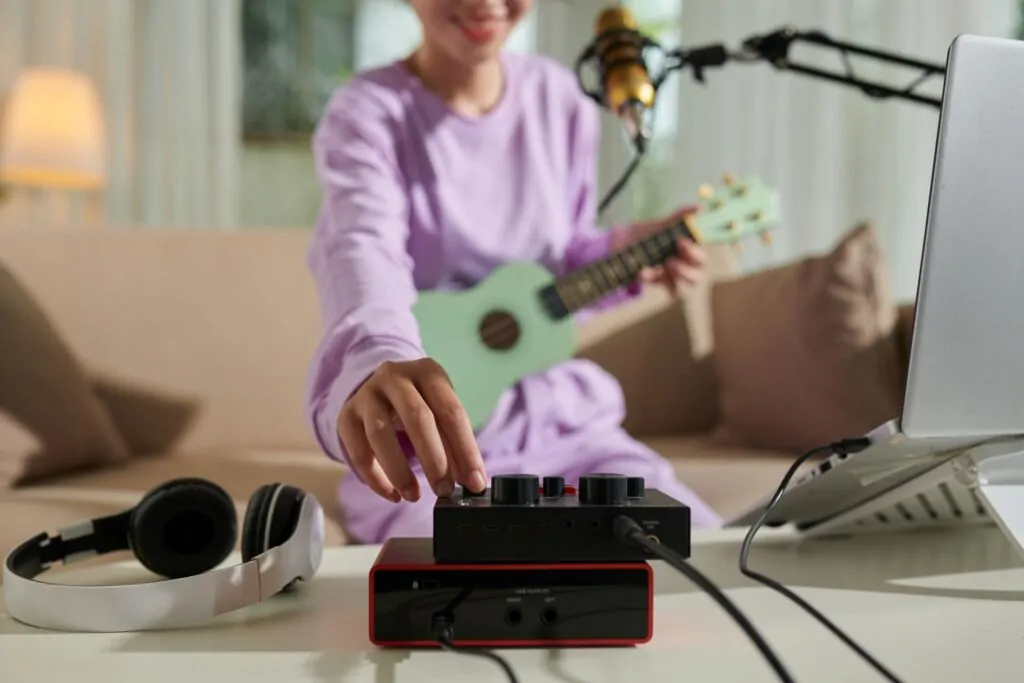
The placement of an EQ pedal in my signal chain can significantly affect the overall sound of my rig. In this section, I will share my knowledge and experience to help you determine the optimal placement for your EQ pedal.
Signal Chain Basics
Before we dive into the specifics of EQ pedal placement, it’s important to understand the basics of the signal chain. In a typical signal chain, the guitar is connected to the pedals, which are then connected to the amplifier. The order of the pedals in the chain can have a significant impact on the overall sound.
Before or After Distortion
One of the most common questions regarding EQ pedal placement is whether it should be placed before or after distortion pedals. The answer to this question depends on the specific sound you are trying to achieve.
If you want to shape the tone of your guitar before it hits the distortion pedal, then you should place the EQ pedal before the distortion. This can be useful for removing unwanted frequencies or boosting certain frequencies to create a specific tone.
On the other hand, if you want to shape the tone of your distorted guitar, then you should place the EQ pedal after the distortion. This can be useful for fine-tuning the tone and removing any unwanted frequencies that may have been introduced by the distortion pedal.
Effects Loop Integration
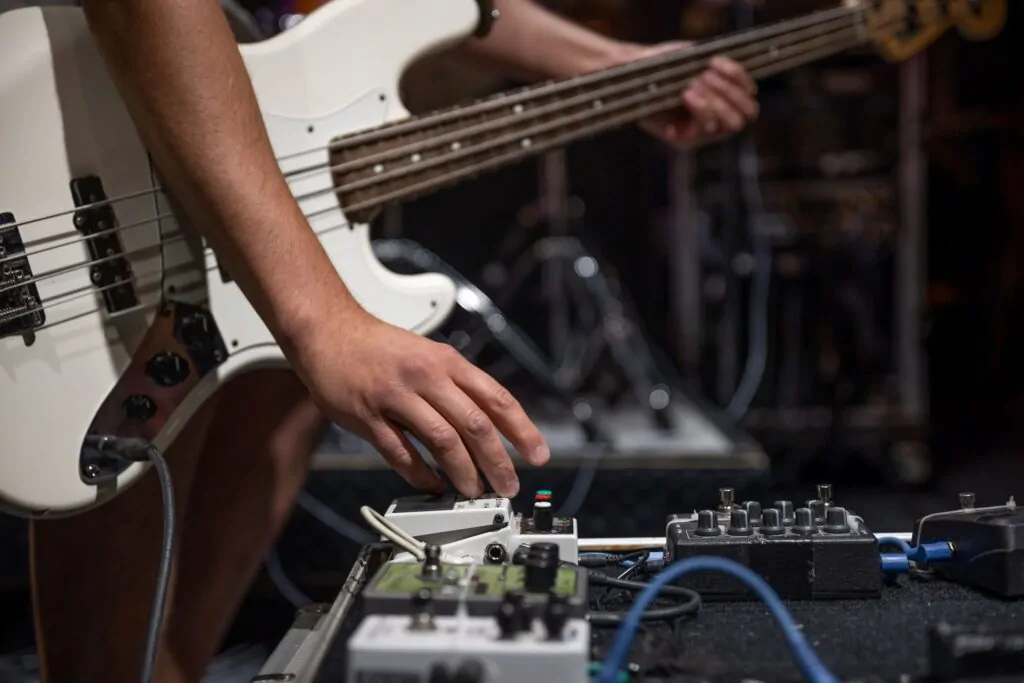
Another option for EQ pedal placement is to integrate it into the effects loop of your amplifier. This can be useful for shaping the overall tone of your rig, rather than just the tone of your guitar.
If you are using a noise gate or a buffer pedal in your signal chain, it’s important to consider how they will interact with the EQ pedal. Placing the EQ pedal before a noise gate or buffer can affect their performance, so it may be best to place the EQ pedal after these pedals.
The optimal placement of an EQ pedal in your signal chain depends on the specific sound you are trying to achieve. By understanding the basics of the signal chain and considering the placement of other pedals in your rig, you can determine the best location for your EQ pedal.
EQ Settings for Different Genres
When it comes to guitar tone, EQ pedal placement can make all the difference. Whether you’re playing rock, metal, blues, jazz, pop, or acoustic, the right EQ settings can help you achieve the perfect sound. In this section, I’ll provide some general guidelines for EQ settings for different genres.
Rock and Metal
Rock and metal guitarists often aim for a heavy, aggressive sound with a lot of distortion. To achieve this sound, it’s important to focus on the midrange and high-end frequencies. Boosting the midrange can help your guitar cut through the mix, while boosting the high-end can add clarity and definition to your tone.
Here are some general EQ settings for rock and metal:
- Boost the low-end slightly for a fuller sound.
- Boost the midrange frequencies around 800-1000 Hz for more presence and definition.
- Boost the high-end frequencies around 2-5 kHz for more clarity and articulation.
- Cut any frequencies that sound harsh or muddy.
Blues and Jazz
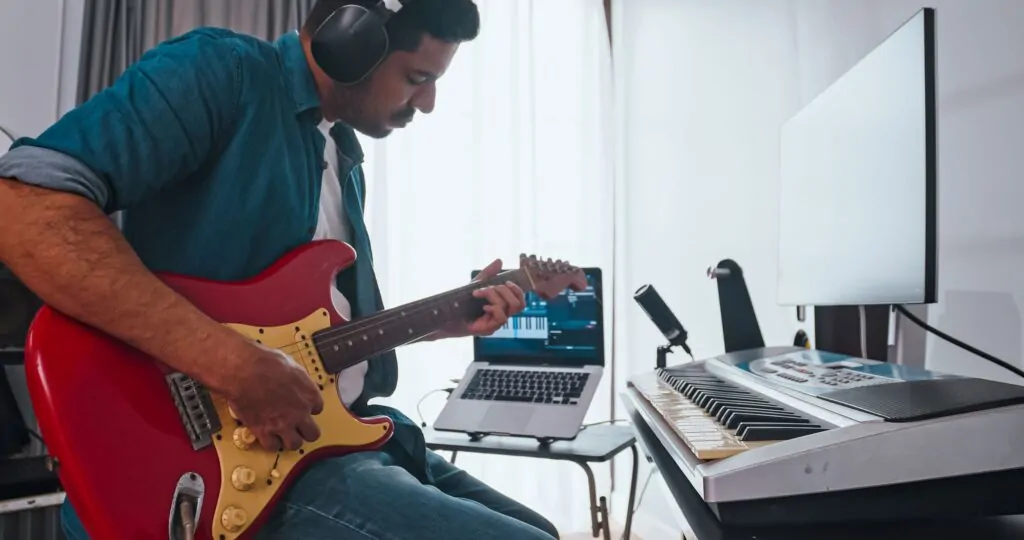
Blues and jazz guitarists often aim for a warm, smooth sound with plenty of sustain. To achieve this sound, it’s important to focus on the midrange and bass frequencies. Boosting the bass can add warmth and depth to your tone, while boosting the midrange can add presence and clarity.
Here are some general EQ settings for blues and jazz:
- Boost the low-end frequencies around 80-120 Hz for a warmer, fuller sound.
- Boost the midrange frequencies around 500-800 Hz for more presence and clarity.
- Cut any frequencies that sound harsh or muddy.
Pop and Acoustic
Pop and acoustic guitarists often aim for a bright, clear sound with plenty of treble and high-end frequencies. To achieve this sound, it’s important to focus on the treble and midrange frequencies. Boosting the treble can add sparkle and definition to your tone, while boosting the midrange can add warmth and body.
Here are some general EQ settings for pop and acoustic:
- Boost the high-end frequencies around 5-10 kHz for more brightness and sparkle.
- Boost the midrange frequencies around 1-2 kHz for more warmth and body.
- Cut any frequencies that sound harsh or muddy.
Remember, these are just general guidelines, and your EQ settings may vary depending on your guitar, amp, and personal preferences. Experiment with different settings until you find the perfect sound for your playing style and genre.
Advanced EQ Techniques
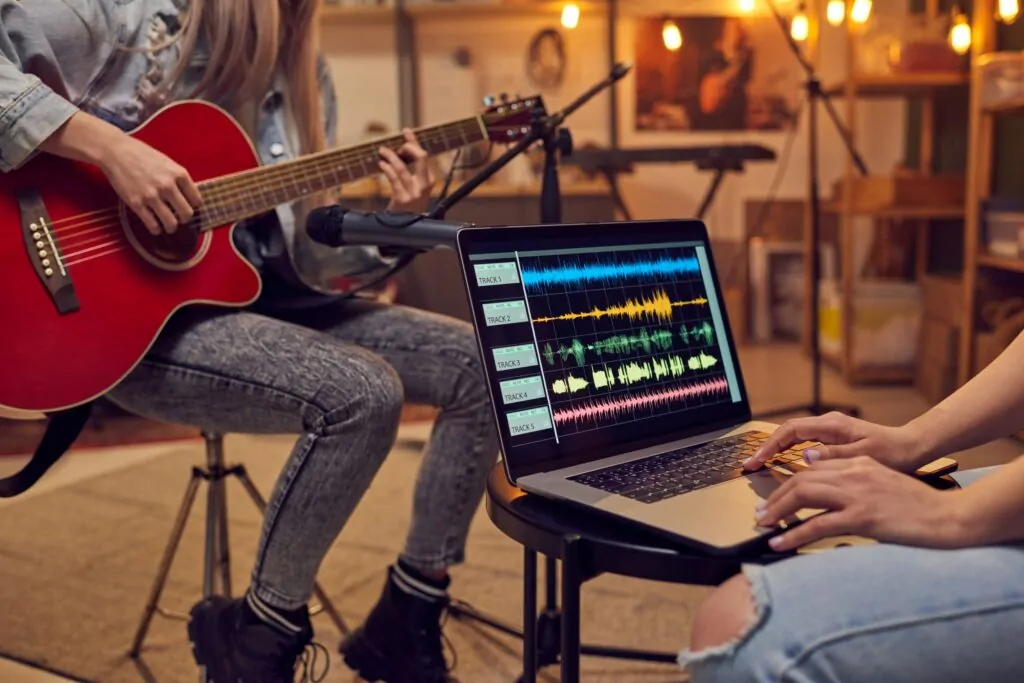
1. Fine-Tuning for Stage and Studio
When it comes to EQ pedal placement, one of the most important things to consider is how it will be used in different environments. For example, when playing live on stage, it may be necessary to fine-tune the EQ to compensate for the acoustics of the room. In a studio setting, EQ can be used to shape the sound of individual tracks or to balance the overall mix.
2. Cutting Frequencies vs. Boosting
Another important consideration when using an EQ pedal is whether to cut frequencies or boost them. Cutting frequencies can help to reduce unwanted noise or hum, while boosting frequencies can help to bring out certain aspects of the sound. When cutting frequencies, it is important to be careful not to remove too much of the signal, as this can result in a thin or weak sound.
3. Using EQ to Combat Feedback and Noise
One of the most common uses for an EQ pedal is to combat feedback and noise. In a live setting, feedback can be a major problem, especially when using high-gain amplifiers or playing in a noisy environment. By using an EQ pedal to cut certain frequencies, it is possible to reduce the risk of feedback and improve the overall sound quality.
In conclusion, EQ pedal placement is an important consideration for any guitarist looking to fine-tune their sound. Whether playing on stage or in the studio, EQ can be used to shape the sound of the guitar and improve overall sound quality. By understanding the different techniques and approaches to EQ, it is possible to achieve a professional-sounding tone and avoid common problems such as feedback and noise.
Selecting the Right EQ Pedal
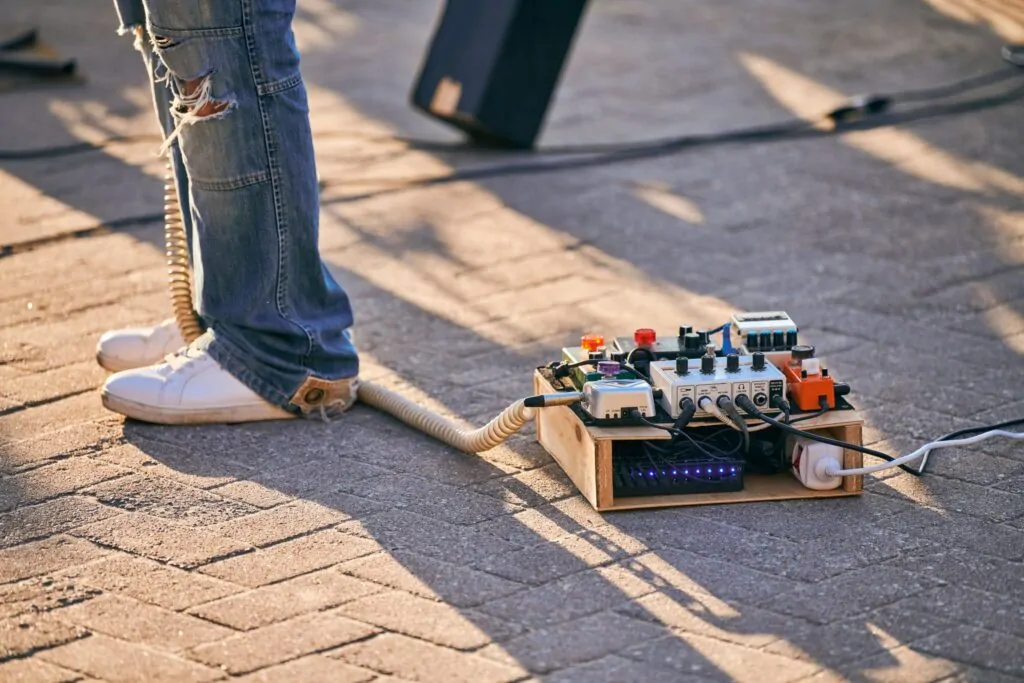
When it comes to selecting the right EQ pedal for your pedalboard, there are a few features to consider. EQ pedals are a versatile tool that can help shape your tone and bring out the best in your guitar sound.
1. Features to Consider
One important feature to consider is the number of bands on the EQ pedal. A 10-band EQ, like the MXR 10-Band EQ, offers more precise control over your tone than a 7-band EQ, like the Boss GE-7. However, you may not need that level of control depending on your playing style and the sound you’re going for. Get the MXR 10-Band EQ here
- Cut or boost 10 different frequencies up to ±12dB
- LEDs provide high visibility, even in direct sunlight
- 18-volt operation for increased headroom
- Two outputs for running two separate signal chains
- True bypass switching
Another feature to consider is the range of the EQ pedal. Some EQ pedals, like the Empress ParaEQ, offer a wider range of frequencies to adjust, giving you more flexibility in shaping your tone.
Lastly, consider the placement of the EQ pedal in your signal chain. EQ pedals are typically placed after utility pedals like compression and before time-based effects like reverb and delay. However, the placement ultimately depends on the sound you’re going for and the other pedals in your signal chain.
2. Popular EQ Pedal Models
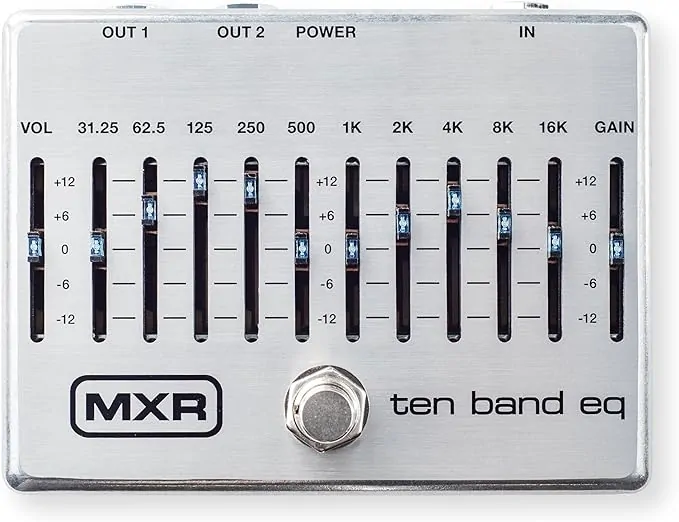
There are several popular EQ pedal models on the market, each with their own unique features and capabilities. The Boss GE-7 is a classic 7-band EQ that’s been used by guitarists for decades. The MXR 10-Band EQ offers more precise control over your tone with its 10 bands. The Empress ParaEQ is a versatile EQ pedal that offers a wide range of frequencies to adjust.
Selecting the right EQ pedal for your pedalboard depends on your playing style, the sound you’re going for, and the other pedals in your signal chain. Consider the number of bands, range, and placement of the EQ pedal when making your decision. Popular EQ pedal models include the Boss GE-7, MXR 10-Band EQ, and Empress ParaEQ.
Frequently Asked Questions
Should an EQ pedal be placed before or after overdrive?
The placement of an EQ pedal in the signal chain is a matter of personal preference. However, many guitarists prefer to place the EQ pedal after overdrive to shape the tone of the distorted signal. This allows for more control over the overall sound of the pedalboard.
What are the benefits of using an EQ pedal with a guitar?
An EQ pedal allows for greater control over the tone of a guitar. It can be used to boost certain frequencies, cut unwanted frequencies, and shape the overall sound of the guitar. This can be particularly useful when playing in different environments or with different amplifiers.
How does pedal placement affect tone in a guitar effects loop?
Pedal placement in a guitar effects loop can have a significant impact on tone. An EQ pedal placed in the effects loop can shape the overall sound of the amplifier, while placing it before the amplifier can shape the sound of the guitar before it reaches the amplifier.
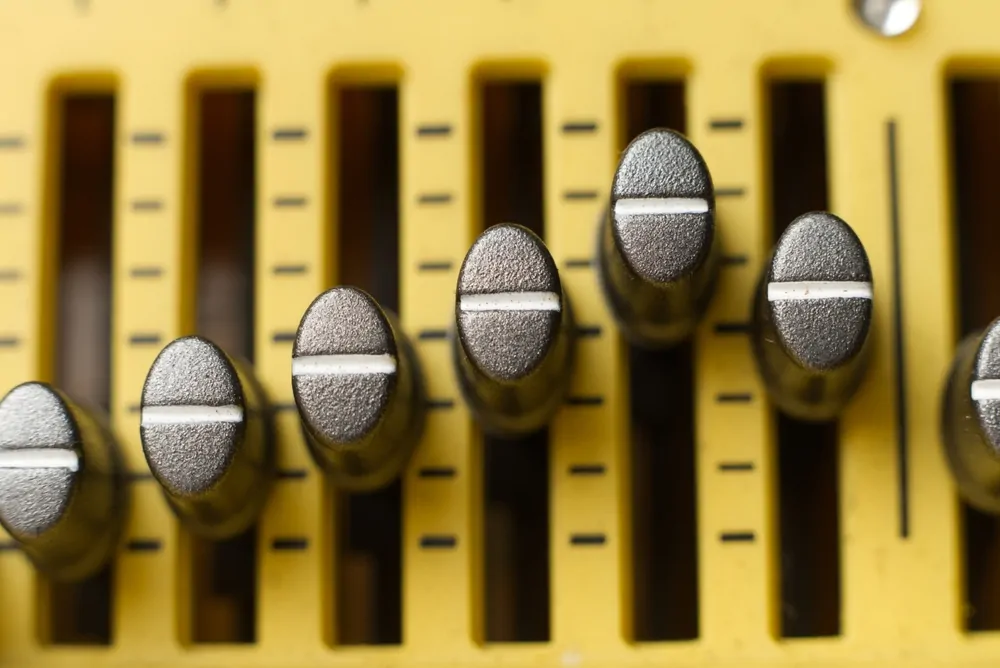
Where is the optimal position for an EQ pedal on a pedalboard?
The optimal position for an EQ pedal on a pedalboard is a matter of personal preference. However, many guitarists prefer to place the EQ pedal near the end of the signal chain, after overdrive and modulation effects. This allows for more control over the overall sound of the pedalboard.
Can an EQ pedal be effectively used with an acoustic guitar?
Yes, an EQ pedal can be effectively used with an acoustic guitar. It can be used to shape the tone of the guitar and compensate for any deficiencies in the sound of the instrument. However, it is important to use an EQ pedal that is specifically designed for use with acoustic guitars.
What settings on an EQ pedal are best for metal genre?
The settings on an EQ pedal that are best for metal genre depend on personal preference and the specific sound that is desired. However, many metal guitarists prefer to boost the midrange frequencies and cut the low frequencies to achieve a tight, focused sound.

My name is Howard Matthews and I have been playing the guitar since I was knee-high. My parents like to joke that I was pulling the strings even before I was born. In fact, one of my earliest memories is sitting on the couch with my dad’s guitar, wreaking havoc on the chords.
Now, 40 years later, I can attest that I play them much better than I did back then. I have followed in the footsteps of both my parents – much to their delight – and have been the main guitarist in my band for the best part of three decades.
Music has always been my passion, and until recently my life has been so consumed with it that I haven’t had a moment to have a breath (and I wouldn’t have it any other way)!
